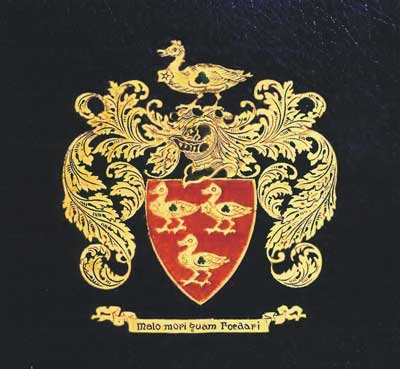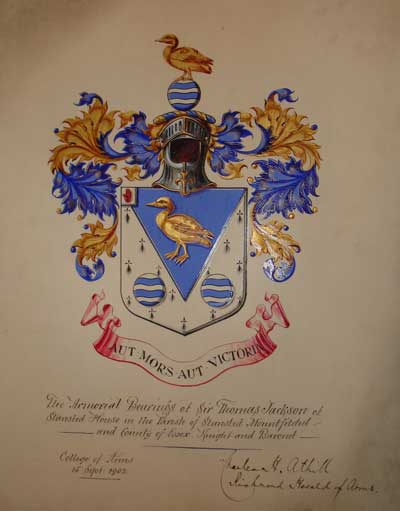 |
| I am channeling my inner Laurie McConnell – a friend who is
fearless in the silly selfie department. Read on, and my choice of this as
opening might make sense. |
Much of this project, that I embarked on a decade ago, in totally naive innocence, is akin
to a game of Whack-a-Mole. I hammer down one peg, and up pops another. Am I done yet? Obviously not. I still want
to make sure that I don’t find out something in the eleventh hour that substantively
shifts the course of the narrative - at least the part that I have assembled so far.
One of what I call
My Great
Unknowns is that I still can’t find Sir Thomas JACKSONs farm in Co.
Kildare. A few years ago, I did find out that Patrick Lynch, the Kildare farmhand who he hired in 1892 to manage his Cavananore farm in Co. Louth, came from Lughill,
Parish of Monasterevin, Co. Kildare. That locale might be a clue. A few years
ago, I listed all the townlands in Co Kildare where
Jacksons
lived or owned leases, not that
there were any compelling slam dunks. After spending the past two weeks in the
Deeds Registry in Dublin, I have many more names and places to add, and will
update that page when I get home. Perhaps the truth will turn out to have been
staring me right in the face all along.
Part of why I keep pursuing this question about the missing
farm is that it might help to explain some other aspects of Thomas’ early childhood.
It might even be linked to the reason why his father lost the lease to their Co
Leitrim farm in the late 1840s. That happened when Thomas was about seven or
eight years old. He and his parents, and brother and sisters ended up moving
back in with his grandmother. His father was reduced to managing his mother’s
farm, surely not a moment of triumph for him.
Then there is the question of the shovellers – the birds
that Sir Thomas had on his heraldic arms when he was first knighted and then
made a baronet.
 |
| This crest is connected to the JACKSONs of Doncaster. Both the motto and the birds are also present in other JACKSON crests. |
 |
| This is Sir Thomas Jackson's arms: ARMS: Ermine on a pile azure between two fountains in
base proper a Sheldrake or. CREST: Upon a fountain proper a Sheldrake or. MOTTO Aut Mors aut Vitoria (Either death or victory). |
.Does the inclusion of these birds – they are not common - mean that Thomas’s family were related to the Jacksons
of Forkhill, Co Armagh, or did his family merely believe that they were related – without any proof? Or – a third
possibility - did the Chief Herald who designed the crest simply decide that
the birds were a good fit? Unfortunately, there are no records of the why of this decision, but we do have a written
record from 1912 where Sir Thomas referred to himself and the Forkhill Jacksons
as kin. It amounts to a smoking gun,
but no cigar. Not yet.
At least one line of the Irish shoveller JACKSONs, if not
all of them, descended from a Rev. Richard JACKSON (1603-1689) of Kirkby
Lonsdale, Westmorland. Not only did he sire twenty plus children with two wives,
but he also went from being totally down on his financial gums in the 1640s, to
ending his life as a decidedly a wealthy man in 1681. How did that happen? Part of it was likely thanks to the money made
by his sons in Ireland.
In the mid to late 1600s, William Jackson, who owned significant
holdings in a handful of townlands in Coleraine, was reputed to be a bit of a
buccaneer. He felled trees on land that wasn’t his and then sold them, and he
also harvested fish without a license and sold them as well. He also stacked the
votes on the local Council. That’s probably only the half of it.
One of William’s younger brothers, Samuel JACKSON, seems to have
been a successful builder and property developer taking advantage of the
post-Cromwellian reallocations of lands. At the time of his death in 1706, at Mary’s
St. in the City of Dublin, he was worth more than 30,000 pounds sterling, and also
had extensive holdings in Counties Meath, Monaghan, and Dublin. His sister-in-law,
Susan Mitchelburn aka Jackson aka Beresford died on the same day that he did –
he died in the morning, she in the afternoon. She was the widowed wife of his
brother William, and was also the estranged wife of the much celebrated Col. John
Mitchelburn of Derry fame. What is more, she died at Samuel’s home on Mary
Street, where the two of them had lived with a houseful of servants.
Samuel left all his lands to various brothers and nephews,
and most of the bequeathed estates stayed intact in the extended family until
well into the late 1800s. Even the seemingly improvident marriage of the fifty-four-year-old
Abigail Jackson to the twenty-seven-year-old Oliver
Crofton, didn’t diminish the family coffers. She ended up with most of the lands after her brother Rev.
Robert Jackson of Tatham’s death in 1726, but Oliver got his hands on none of them. It seems - so far - that none of Samuel Jackson’s money found its way into the pockets of Thomas’ branch of the family, unless they lost their share of it somewhere
along the way. There is a family story of an ill fated card game where Thomas
g-g-grandfather is alleged to have bet the farm in the early 1700s, and lost. That
would fit.
Now, if Sir Thomas was related to these Jacksons of
Westmorland, then at least one more question is especially tantalizing, given
that Sir Thomas became a world-renowned international banker. Was Thomas related - in any way - to the
John JACKSON who was Oliver Cromwell’s treasurer? This is not as big a
stretch as it might seem since one of Rev. Richard’s many sons was a John
Jackson who apprenticed in London as a goldsmith. He might have been a tad
young to have assumed the post as Treasurer, but perhaps one of his uncles was also
named John Jackson and he worked for him. If so, it would go a long way to
explaining how the brothers were able to lay claim to such choice bits of land in
Ireland in the mid-1600s. In a few weeks, I plan to visit the Goldsmiths
Library in London to see what else I can learn.
All this being said, I do realize, that at some point, very
soon, I will have to draw a line in the shifting factual sands, and then say - with
as much finality as I can muster - I am
done… at least for now.
 |
| My page of Jackson
Crests is due for a major update when I get home in June. This coin is one of
many bits that will be added. This coin was used by a Sir George JACKSON in 1795. |






















